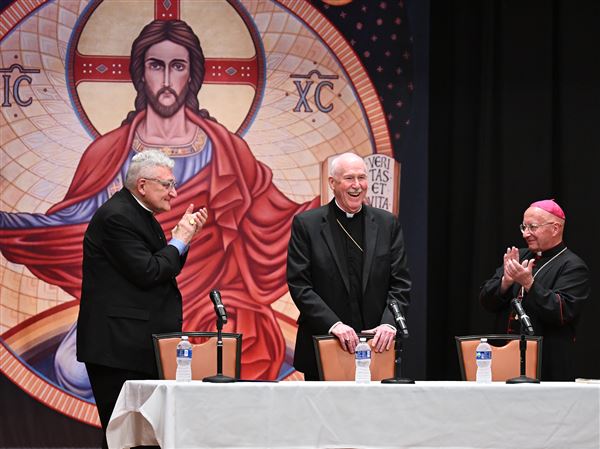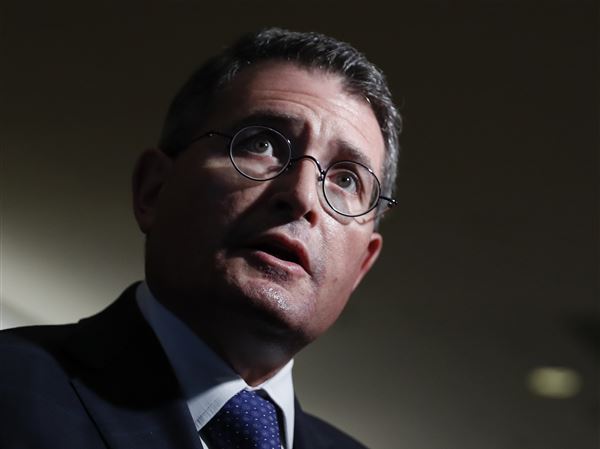Business managers have occasionally suggested to human resources consultant Bob Floreak that they wished they could shed older employees and shift to a younger workforce. He responds with one basic question:
Why?
He tries to steer those youth-minded employers toward a different attitude, he says, advising that aside from the illegality of discriminating against workers based on age, it’s also not in the company’s own best interest.
“What it comes down to is managing the assets you have, and some of the traits the baby boomers bring are very valuable in the workplace,” said Mr. Floreak, president of Cranberry-based Acuity Human Resources. “Instead of fighting [the employment of older workers], our thought is you should be looking for ways to take advantage of it.”
While there are more people over age 50 in the workforce than ever — due to a combination of population trends, health improvements and their increased need for long-term financial security — it has not eliminated stereotypes about their diminishing productivity. The aspersions cast on their technological savvy, ability to adapt and other traits may be less frequent or more subtle than in decades past, but plenty of age-related complaints keep labor lawyers and the U.S. Equal Employment Opportunity Commission busy.
The EEOC receives more than 20,000 new cases a year filed by people alleging violations of the 1967 Age Discrimination in Employment Act, which protects workers over age 40 from harmful job actions based on their age.
The good news is that complaints have fallen since the Great Recession — totaling 20,144 in the last fiscal year compared to a peak of 24,582 in 2008.
The number may be coming down, say advocates for older workers, because as the economy has improved, businesses have felt less incentive to pare that experienced part of their workforce that also tends to be among the highest-paid.
Or there could simply be greater acceptance of people staying on the job longer, considering the prevalence of baby boomers in all of society and the gradual erosion of the notion that age 65 is the right age for everyone to retire.
“A lot of the more sophisticated employers with human resources staffs have embraced the reality [of retaining workers longer] because that’s what they have to deal with, and so they are adopting policies that are flexible enough to attract and retain the most skilled, higher share of the workforce that is older,” said Dan Kohrman, senior attorney for the AARP Foundation Litigation nationally.
Still, there are new cases like a suit filed in California in August by ex-employees of computer services giant Hewlett Packard, alleging that its layoffs had targeted them and other older workers in setting a “priority to transform itself from an ‘old’ company into a ‘younger’ operation.”
Locally, Ed Moranduzzo of Delmont won a $139,000 judgment this year against Food Service Marketing Inc. of Crafton for dismissing him at age 73 in 2012 with a false claim by a manager that he had voluntarily retired from his salesman’s position. His duties were given to co-workers a quarter-century younger though there had been no indication Mr. Moranduzzo’s performance on the job had diminished.
Labor attorney Sam Cordes, who represented Mr. Moranduzzo, said such cases are frequently difficult to win because employers try to avoid leaving a “smoking gun,” such as the one that got Westinghouse Electric Corp. in trouble in the 1990s. In a case filed by a middle-level manager fired at age 53, it was revealed that corporate discussions about staff turnover included references to the need to get rid of “blockers” who were in the path of younger employees.
Mr. Cordes, who says his firm is currently working on about 70 age discrimination cases in various stages, said legal problems arise from companies “not taking time to look at the individual, but just making decisions based on a group and assumptions about it.”
Discrimination in terminations can be difficult to prove, but even more challenging — and perhaps subtly affecting more people — is finding evidence of hiring practices that favor younger applicants.
Such policies are part of the reason that older workers have a much longer waiting period in being rehired if they lose their current jobs, said David Neumark, an economics professor at the University of California Irvine.
Mr. Neumark is among researchers that have used a methodology in which they make up dummy resumes to respond to help-wanted ads and gauge how the employers respond differently to candidates of different ages.
His recent national study showed fictional applicants age 64-66 received 35 percent fewer callbacks than those age 29-31, and candidates in the 49-51 age range got 18 percent fewer responses. Older female applicants, in particular, fared poorly.
“If you don’t get hired, you don’t know if you’ve been discriminated against, because you don’t know who else got hired,” Mr. Neumark noted.
The issue is all the more relevant, he said, given how Social Security’s standard retirement age has been pushed higher and people tend more often now to transition out of the workforce in phases rather than suddenly.
“More and more older workers are out there wanting and needing to work,” said AARP’s Mr. Kohrman, whose foundation group monitors and assists discrimination cases nationally.
“The good news is there continues to be progress in understanding of the capabilities of older workers. A lot of [discrimination and stereotype] issues will change naturally as the workforce ages and more and more employers respond to demographics, but it’s not enough to wait and hope.”
Gary Rotstein: grotstein@post-gazette.com or 412-263-1255.
First Published: October 31, 2016, 4:00 a.m.

















